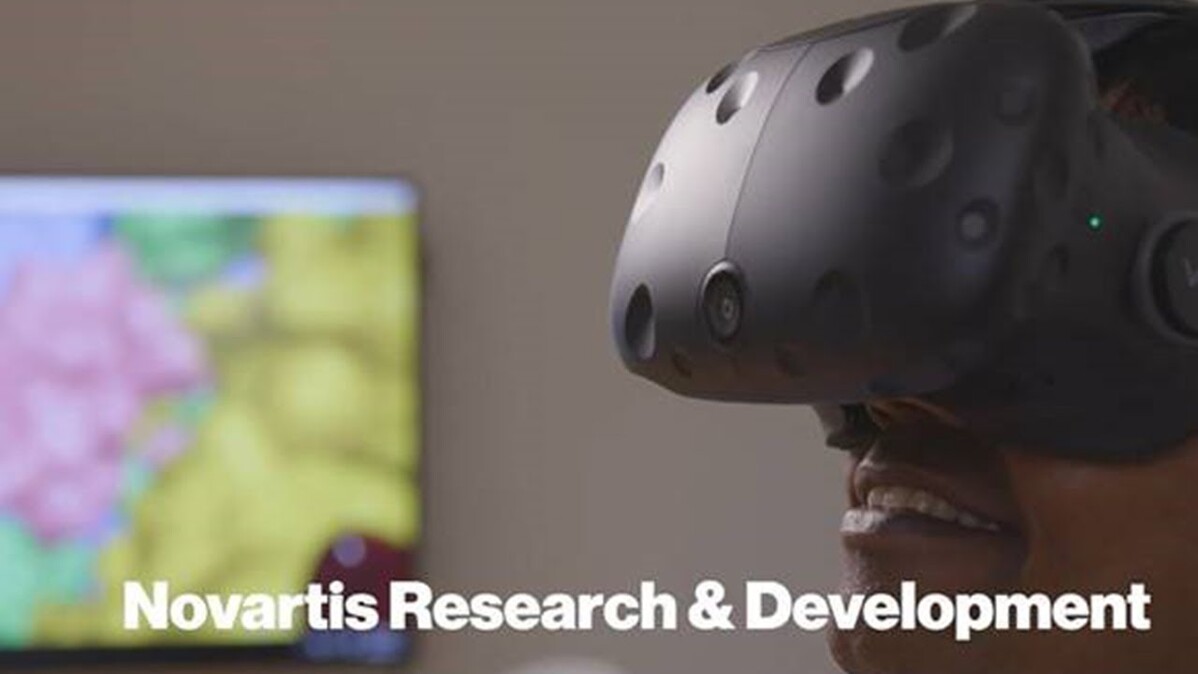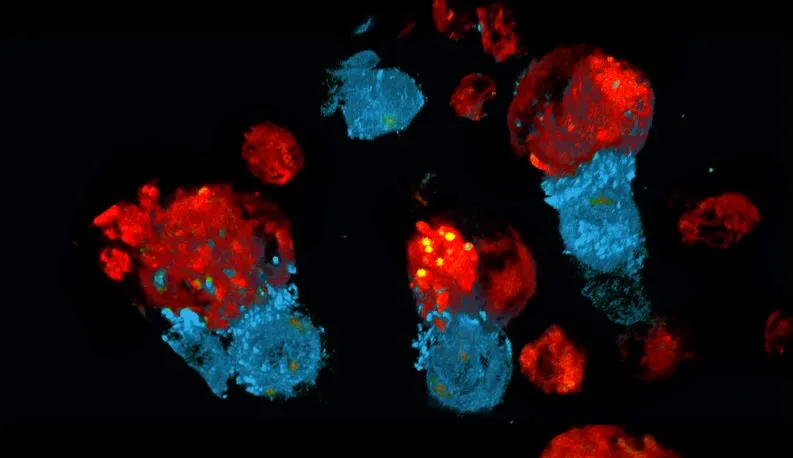At the American Society of Hematology (ASH) Annual Meeting & Exposition and the San Antonio Breast Cancer Symposium (SABCS) in December, Novartis will present more than 180 abstracts.
We have a rich history of research and development (R&D) in the areas of hematology and oncology. For decades, we have leveraged learnings from both successes and setbacks to broaden our understanding of unmet patient needs, and identify ways to help transform the standard of care for those with blood disorders and cancer. Some of these scientific insights, combined with the information and feedback collected directly from the patient community and in the real-world setting are behind the data being presented at both ASH and SABCS.
 VIDEO
VIDEO
Learn more about the Novartis approach to R&D in this video, and keep reading for more details about our work in oncology and hematology.
Understanding disease to fuel innovation
In the past 30 years, Novartis has helped transform treatment for advanced breast cancer. Data presented at medical meetings throughout 2019 demonstrate how our evolving understanding of this disease and past innovations that followed – from the discovery of letrozole to the development of drugs that inhibit different pathways for tumor growth, including those targeting the mTOR protein, the CDK4/6 enzymes and the PIK3CA mutation – has made significant impact in extending patients’ survival and quality of life.
Over the years, we also advanced our knowledge of chronic myeloid leukemia (CML), fueling our ability to develop two tyrosine kinase inhibitor (TKI) targeted therapies that helped transform CML from a deadly leukemia to a chronic condition and making treatment-free remission an option for eligible patients. However, these past breakthroughs are not enough – a significant number of patients still face poor outcomes after failing to respond to first- and second-line TKIs or experiencing serious side effects of therapy.
The published discovery of specific site (the myristate-binding pocket) in the BCR-ABL1 oncoprotein – the protein causing CML–, led our researchers to explore this as a potential new site to target and overcome TKI resistance. Our team researched and developed a new generation compound that specifically binds to the BCR-ABL1 gene through a unique mechanism.
“Our team screened for other compounds that might be able to stop CML cells from multiplying by inhibiting the BCR-ABL1 oncoprotein through the newly discovered myristate-binding pocket,” explains Paul Manley, Executive Director of Novartis Life Science. “Our effort to identify molecules that bound in the myristate pocket and to optimize them culminated in the discovery of asciminib – an investigational drug that targets the CML oncoprotein with high specificity. During our development program, asciminib has been shown to overcome mutations that create resistance to other TKIs in patients with CML. Because of its different target site, it could potentially be used in combination with current TKI therapies.”

The role of patient insights in R&D
Another avenue for transformative R&D is grounded in working directly with the patient community. This practice is not new, but Novartis is reimagining how we engage patient communities and translate their insights through digital patient insight panels. Comprised of patient advocates and experts within specific disease areas, these panels allow us to bring these learnings into our pipeline research and development. The process centers on ongoing dialogue through digital engagement, enabling researchers to respond and adjust more seamlessly when priorities change or the focus shifts.
By sharing their perspectives around research design, patient experts can weigh in on factors – such as the primary or secondary endpoints for a clinical trial, patient reported outcomes instruments, trial protocols and informed consent forms – to ensure the drug being developed will indeed provide significant value to patients. This engagement helps ensure that resources are focused in ways that bring actual value to patients and society.
“We have seen that by collecting data collaboratively with the patient community and advocacy experts, we can help shrink research timelines,” explains Alexey Salamakha, Director of Global Patient Relations at Novartis. Patient input can improve and accelerate drug development by aligning the design of clinical trials with factors that are extremely important for patients and caregivers, such as consideration for the amount of time spent at appointments, convenience, and transportation.

“Patients help us clarify expectations and set up a process in which the most relevant stakeholders can realistically participate,” says Salamakha. “Sometimes facilitating conversations between the investigators and patient experts helps to reinforce the very valid reasoning behind why certain research elements should or should not be used for a specific trial. Investigators are always impressed by the expertise and knowledge shared by our patient experts.”
Novartis also captures patient insights through a variety of global patient surveys, including quality-of-life and disease-burden assessments, as well as real-world evidence (RWE) studies that help compare, contrast, or consolidate gaps in treatment, disease burden and care reported by patients and health care providers. Two examples to be featured this year at ASH include the Sickle Cell World Assessment Survey (SWAY) and the ITP World Impact Survey (I-WISh), which are large-scale patient and physician analyses developed hand-in-hand with patient advocacy groups. Their findings are helping improve the delivery of care while informing decision-making around future research by, for example, influencing future trial endpoints based on patients’ unmet needs.
RWE benefits society beyond R&D
Novartis is not the only player that sees value in RWE. Both the US Food and Drug Administration (FDA) and the European Medicines Agency (EMA) are looking to evaluate the use of RWE throughout the drug development process and harness its potential through a learning healthcare system – where science, information, and culture are aligned for continuous improvement and innovation.
In CAR-T, we are collaborating with the Center for International Blood and Marrow Transplant Research (CIBMTR) to observe the long-term safety and effectiveness in US patients treated with CAR-T cell therapies. This US collaboration facilitates the standardized collection of real-world data from the use of our CAR-T cell therapy in patients whose data is captured by the registry for cellular data.
“My vision is for us to collect so much information that it will provide us with additional year-after-year data to better understand patient outcomes in the emerging field of CAR-T,” says Matthew Robson, Global Head of Medical Affairs, Cell and Gene Therapies at Novartis.
In addition to serving as a confirmatory measure, RWE may provide different types of information that can inform further research. “Considering we are at the outset of cell and gene therapy, the idea is that this type of data will provide useful information for the next generation of CAR-Ts,” Robson explains.

“In collecting RWE, the source and the methodology are important, and in the case of CAR-T, we have the benefit of collaborating with recognized entities like CIBMTR,” says Robson. “If we can think of cell therapy as the next-generation approach to bone marrow transplants, then working with a group that has been meticulously gathering the data and following up for decades in the transplant setting is the right approach.”
Novartis will present RWE collected through the CIBMTR registry at the 2019 ASH meeting.
Uncovering profound and under-reported effects on people living with sickle cell disease